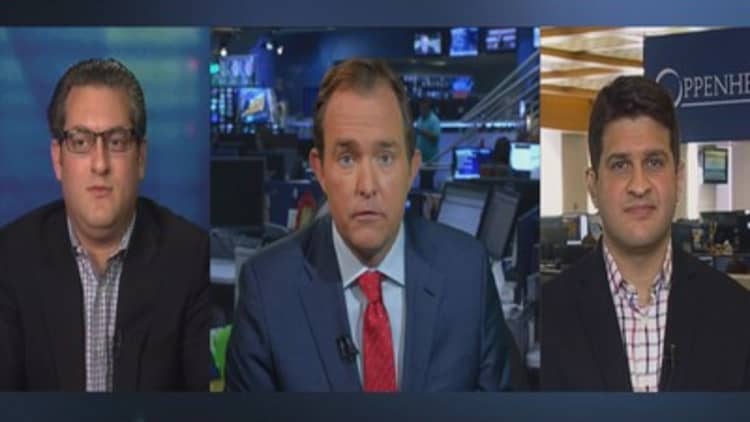
With "The Martian" invading big screens worldwide, Wall Street is turning to the film's interplanetary premise as a reference point for another long-term mission: The process of bringing interest rates back to long-term "normal" levels.
"We see a better chance of landing men on Mars before a full normalization of nominal and real interest rates, especially 10-year yields, to historical norms," wrote Deutsche Bank equity strategist David Bianco.
The short-term federal funds rate has been at ultralow levels for nearly seven years, and despite widespread expectations that the Federal Reserve would raise its rate target this year, that is looking increasingly unlikely. Meanwhile, longer-term bond yields have remained markedly low in the U.S. and around much of the world.
Bianco doubts that the 10-year Treasury yield will exceed 3 percent "for the rest of the cycle."
Read More Matt Damon on Mars and microfinancing
"To make the case for normalization, you'd really have to see rates go significantly higher, just given how much they've trended lower over the past few years," pointed out Oppenheimer technical analyst Ari Wald in a Monday "Trading Nation" segment.
Examining a chart, Wald sees "no real signs that this very long-term secular trend has reversed higher."
Yet Neil Azous of Rareview Macro remarked on "Trading Nation" that while yields may stay low in the short term, "we have two more Federal Reserve meetings between now and the end of the year, and Fed Chair Janet Yellen has said that she still plans on raising rates sometime before the end of the year, so until that's removed from the marketplace, the idea that we're lower for longer or in perpetuity doesn't seem to add up completely."
Of course, a higher federal funds rate might not necessarily mean higher long-term bond yields.
The Fed is worried about inflation, but maybe it shouldn't be
Like Bianco, "We, too, believe that the longer end of the [Treasury] curve is going to stay somewhat anchored by more subdued global growth expectations, while it's the short end that might continue to inch higher based on Fed expectations," Wald said.
Indeed, a recent paper by Kansas City Fed economist Jonathan Willis found that "the transmission of monetary policy from short-term to longer-term interest rates occurs with a longer lag [now] than in the pre-1984 period."






